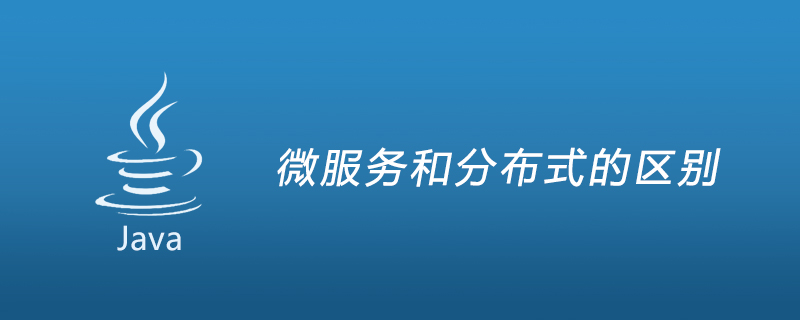Home >Java >javaTutorial >The difference between microservices and distributed
The difference between microservices and distributed
- (*-*)浩Original
- 2019-06-15 11:09:0930901browse
Distributed architecture is the application and tool of distributed computing technology. Currently mature technologies include J2EE, CORBA and .NET (DCOM). These technologies involve a wide range of content, and related books are also very It does not involve the details of these technologies, but only discusses their main similarities and differences from the background of various distributed system platforms and their application in software development.

#Microservice architecture is a new technology for deploying applications and services in the cloud. Much of the debate around microservices has focused on whether containers or other technologies are good at implementing microservices, and Red Hat says APIs should be the focus. (Recommended learning: Java Video Tutorial)
Microservices can run in "its own program" and communicate with HTTP-type APIs through "lightweight devices." The key is that the service can run in its own program. Through this we can distinguish service exposure from microservice architecture (distributing an API in an existing system). In service exposure, many services can be restricted to internal independent processes. If any of these services require additional functionality, the process scope must be reduced. In the microservice architecture, you only need to add the required functions to a specific service without affecting the overall process architecture.
From a conceptual understanding, distributed service architecture emphasizes servitization and decentralization of services, while microservices emphasizes service specialization and fine division of labor; from a practical perspective, microservices The architecture is usually a distributed service architecture, but the reverse is not necessarily true. Therefore, choosing microservices usually means solving various problems of distributed architecture.
The way to distinguish distribution is based on different businesses based on different machines.
Divide a large system into multiple business modules. The business modules are deployed on different machines, and data interaction occurs between each business module through interfaces. The way to distinguish distribution is that different services are based on different machines.
Microservices emphasize single responsibility, lightweight communication (HTTP), independence and process isolation.
The subtle difference between microservices and distributed is that the application of microservices is not necessarily scattered on multiple servers, it can also be the same server.
Is distributed microservices?
Not necessarily. If a large application is split into three applications, it is still very large. Although it is distributed, it is not a microservice. . The core element of microservices is tinyness. .
Microservice architecture is a subset of distributed service architecture.
The microservice architecture makes the iteration speed of the entire system higher and more parallel through finer-grained service segmentation, but the complexity and performance of operation and maintenance will increase as the service granularity becomes finer. .
Microservices focus on decoupling to make each module independent. Distribution focuses on resource sharing and speeding up computer calculations.
Distributed: spread the pressure. Microservices: Distributed capabilities.
For more Java-related technical articles, please visit the Java Development Tutorial column to learn!
The above is the detailed content of The difference between microservices and distributed. For more information, please follow other related articles on the PHP Chinese website!

